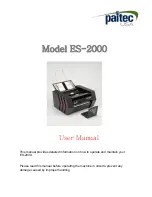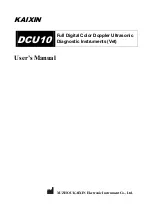
3
2
MVE Vapor Shippers are ideally suited for the transportation of cryobiological materials. The liquid
nitrogen is retained in a hydrophobic absorbent material and the cold nitrogen vapors maintain the
Cryo Storage Area between -150°C and -190°C. The absorbent retains the liquid nitrogen and
prevents accidental spills.
Liquid nitrogen is classified as “Dangerous Goods” by the Department of Transportation (DOT).
At least three regulatory agencies publish dangerous goods regulations:
DOT - Department of Transportation
IATA - International Air Transportation Association
ICAO - International Civil Aviation Organization
If used outside of the USA, please consult your applicable regulatory agencies. Liquid nitrogen is
classified under the name “Nitrogen, refrigerated liquid” and has a UN 1977 code number. The name
classification and UN Code Number must be indicated on the shipping carton in addition to a “Gas
nonflammable” label. Packing and labeling requirements can be obtained from the above organizations.
Also, contact your carrier for any variances in the rules as they may apply specifically to that company
and/or the ultimate destination of the shipment.
Be aware that the regulations undergo periodic revisions. If you need current information prior to
the shipping of your cryobiological specimen, please contact your air carrier for the most recent
regulations. It is your responsibility to provide correct information, such as warning or caution, on
shipping package.
GENERAL DESCRIPTION
The cryopreservation vessel is a double-wall, vacuum-insulated vessel made of aluminum with
a fiberglass composite neck, providing the highest efficiency possible in cryogenic temperature
preservation. The liquid nitrogen absorbent is a hydrophobic blanket consisting of synthetic
amorphous silica and glass fiber. This absorbent is non-hazardous. Use the vessel for liquid nitrogen
only. Liquid oxygen is not compatible with this unit and must not be stored inside the vessel.
The MVE Vapor Shipper is designed with consideration for safety, durability and performance.
However, mishandling of the equipment, including transport or shipping units in an orientation
other than upright vertical, may damage the product. In addition, if a vessel experiences a drop,
hit, or blow, it can suffer immediate or premature vacuum failure.
Upon receipt of the product, examine both the vessel and packaging
for any evidence of damage during shipping. Contact the carrier
within the carrier’s guidelines if there are signs of shipping damage.
Some MVE shipping boxes carry the Transit Tested ISTA-3A
certificate stamp, shown to the right, which is helpful when making a
claim against the carrier, should there be damage from shipping.
Watch after the first fill for any signs of vacuum loss, such as
excessive frost or sweating on the outside jacket. Some frost near
the top just after filling is normal. It is normal for some white dust or powder-like residue from the
absorbent to accumulate at the bottom of the unit due to shipping vibrations. If desired, the owner
may wipe or vacuum it out.
This high quality vacuum insulated unit is compatible with the divergent temperature extremes and
broad applications of cryobiology. The life expectancy of this product is five (5) years.
Products bearing the CE marking as shown comply with the requirements of Directive
93/42/EEC concerning medical devices in EU.
SAFETY
WARNING:
Liquid nitrogen is extremely cold. To avoid injury by frostbite, use extreme care
whenever handling liquid nitrogen, liquid nitrogen storage or transfer vessels, or any objects
which have come in contact with liquid nitrogen.
•
Leave no area of skin exposed.
•
Always wear proper safety attire over clothing: face shield, cryogenic gloves, and
cryogenic apron.
•
Use extreme care to prevent spilling and splashing liquid nitrogen during transfer.
•
Always keep vessel in upright position. Do not tilt, or lay the vessel on side.
•
Immediately remove any clothing or safety attire on which liquid nitrogen has spilled.
•
Get immediate medical attention for any frostbite injuries due to liquid nitrogen.
WARNING:
The venting of nitrogen vapors may deplete oxygen in the air, possibly leading to
asphyxiation or even death. Do not store or use container in areas that are small and enclosed
or have poor ventilation.
WARNING:
Do not tightly seal liquid nitrogen container or prevent nitrogen gas from escaping.
Also, excessive humidity levels or exposure to rainfall could result in freezing of the cork/cover,
and possible explosion.
WARNING:
Never use a hollow tube to measure liquid nitrogen level. This could lead to thermal
injury.
CAUTION:
Handle the cryopreservation vessel with care.
•
Never overfill vessels with liquid nitrogen. Liquid nitrogen should always be below the
bottom of the neck tube. Overfilling the tank may cause immediate or premature
vacuum failure to occur.
•
Never ship Vapor Shipper on its side or upside down. This can lead to vacuum failure
and loss of product inside the Vapor Shipper.
•
Do not scratch neck tube area. Remove and insert inventories carefully. Scratches can
cause premature vacuum failure.
•
Tampering with or removing the vacuum port will destroy vacuum and void warranty.
•
Never drop, hit, or blow the vessel.
•
Never spill liquid nitrogen on or near vacuum port.
•
Never leave the vessel in an outdoor condition.
•
Inspect vessel for any damage before and after each shipment.
•
Keep the bottom of vessel clean and away from chemicals, fertilizers, soil, and moisture.
•
All performance data published for these products is based on static conditions only.
Actual performance will vary upon the nature of use. Manipulation of inventories and
or accessories along with vibration will decrease the working duration/Hold time of
these products.
OPERATION
CAUTION:
Consider the value of the inventory when shipping and determine if the inventory
should be split between multiple containers to reduce the risk of losing valuable and/or
irreplaceable products should the container become delayed, lost, or damaged in shipping.
CAUTION:
Do not use dewars for longterm storage of human biological contents. Failure to follow
Chart’s best operating practices, as set forth in the operating manual, can result in loss of contents.



































